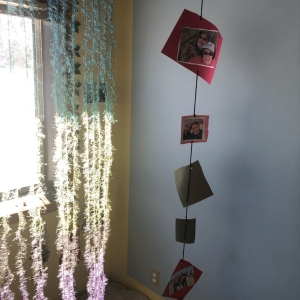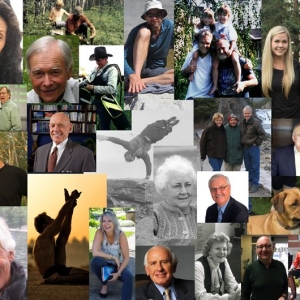Midway on our life’s journey, I found myself
In dark woods, the right road lost…
– From THE INFERNO OF DANTE, Robert Pinsky, trans.
When Barry’s life shifted overnight—a downsized job, the sudden, unexpected end of a twenty-five year marriage, a son being admitted to a treatment centre for addiction (all within a period of thirty days) – he found himself completely lost in the dark woods. Each morning, he woke with questions that had no easy answers: “Who am I now?” “How can I handle this?” “How do I possibly get through this?” Far from feeling heroic, Barry felt stuck and overwhelmed by worry, inadequacy, grief, and self-doubt.
Then, in our coaching together, while recalling some movies and novels Barry had been drawn to over the years, we began wondering if some of these stories held clues for navigating his own adversity. It was at this point I turned Barry to the wisdom of the Hero’s Journey—not only to endure his trials, but to embrace and transform them.
Understanding the Hero’s Journey
The Hero’s Journey was popularized by Joseph Campbell and is a pattern often found in myths, memoirs, and films. The journey begins in the ordinary world, but a “call to adventure” thrusts the hero out of comfort and into the unknown. Adversity arrives through tests, setbacks, and internal doubts. With the help of mentors and allies, the hero faces an “ordeal,” discovers their strength, and eventually returns home—changed, resilient, and armed with new wisdom.
Like Barry, many of us experience life-changing transitions not by choice, but by necessity. In these moments, we are called—often reluctantly—to be the heroes of our own story. Facing adversity through the lens of the Hero’s Journey can provide the structure and inspiration needed when everything seems to be falling apart.
Understanding What a Hero Is, and Your Place in Your Story
When I bring up the topic of a “hero” or “heroine” to an audience, there is inevitably some pushback. “I don’t see myself as any kind of hero” is a response I often hear. A hero (or heroine) isn’t someone who is necessarily outstanding in the world, but someone who has found and followed a path of their unfulfilled self.
When I introduced my graduate students, who were studying to become psychotherapists, to the notion of a “hero’s journey,” one student related not so much to Luke Skywalker in the Star Wars franchise, but rather to the droid, R2-D2. Known for his reliability, bravery, friendship, and versatility, R2-D2 was a loyal companion to many of the key characters in the series. “My heroine’s journey is not to be the hero, but a supporter of heroes and heroines.”
Step 1: Name the Transition and Answer the Call
Adversity begins with a disruption—a diagnosis, a loss, a betrayal. Our instinct may be to resist, clinging tightly to what we know. The first strategy is to name your transition and accept the call. Acknowledge what you are going through. Instead of minimizing pain or pretending life is unchanged, take an honest assessment of the new reality. “I’m not in Kansas anymore.” “This is hard. I am grieving the end of a chapter.” Naming your experience interrupts confusion and denial, preparing you for what’s ahead.
Once the challenge is named, look beneath the surface to see what values, dreams, or relationships are being tested. What “adventure” does this transition ask of you? Facing the uncertainty with open eyes is a crucial first step.
Step 2: Seek Mentors, Allies, and Support
No hero succeeds alone. In every transformative journey, mentors offer wisdom, allies provide encouragement, and even adversaries teach hard lessons. Make it a priority to seek support. Reach out to friends, peers, and professionals. Vulnerability is not weakness; it is the beginning of connection.
Some guides arrive unexpectedly—a thoughtful supervisor, a book that speaks to your heart, a support group that understands your struggle. Accepting help is an act of courage, reminding you that adversity is a shared human experience. As obstacles arise, allow trusted allies to walk with you, reminding you of your inner strength and reflecting possibilities you cannot yet see.
Step 3: Transform Obstacles into Growth
The most critical moment in the Hero’s Journey is the ordeal—a point where both giving up and past certainties are tempting. Here, focus on transforming obstacles into opportunities for growth. Adopt a mindset that welcomes hardship as a teacher. Embrace the hard stuff. What can you learn from this difficulty? What strengths are emerging? Practice self-compassion and celebrate even small victories.
Reflect regularly on how you are persevering. Use the adversity to deepen empathy, clarify values, and foster adaptability. Let trials forge new understandings about yourself. When you reframe setbacks as a path to transformation, you build resilience and prepare for life’s next adventure.
Like Barry, everyone eventually faces a situation where life is shattered by an unexpected transition. By framing adversity as a Hero’s Journey, a “call to an adventure,” rather than the “survival of a disaster,” you gain tools to navigate the unknown: naming your struggles, seeking connection, and transforming hardship into growth. These strategies empower you to be more than a survivor – instead, you become a hero on a voyage, embracing a time of great difficulty, allowing the pain to break you open so a stronger, wiser and kinder self can emerge.




